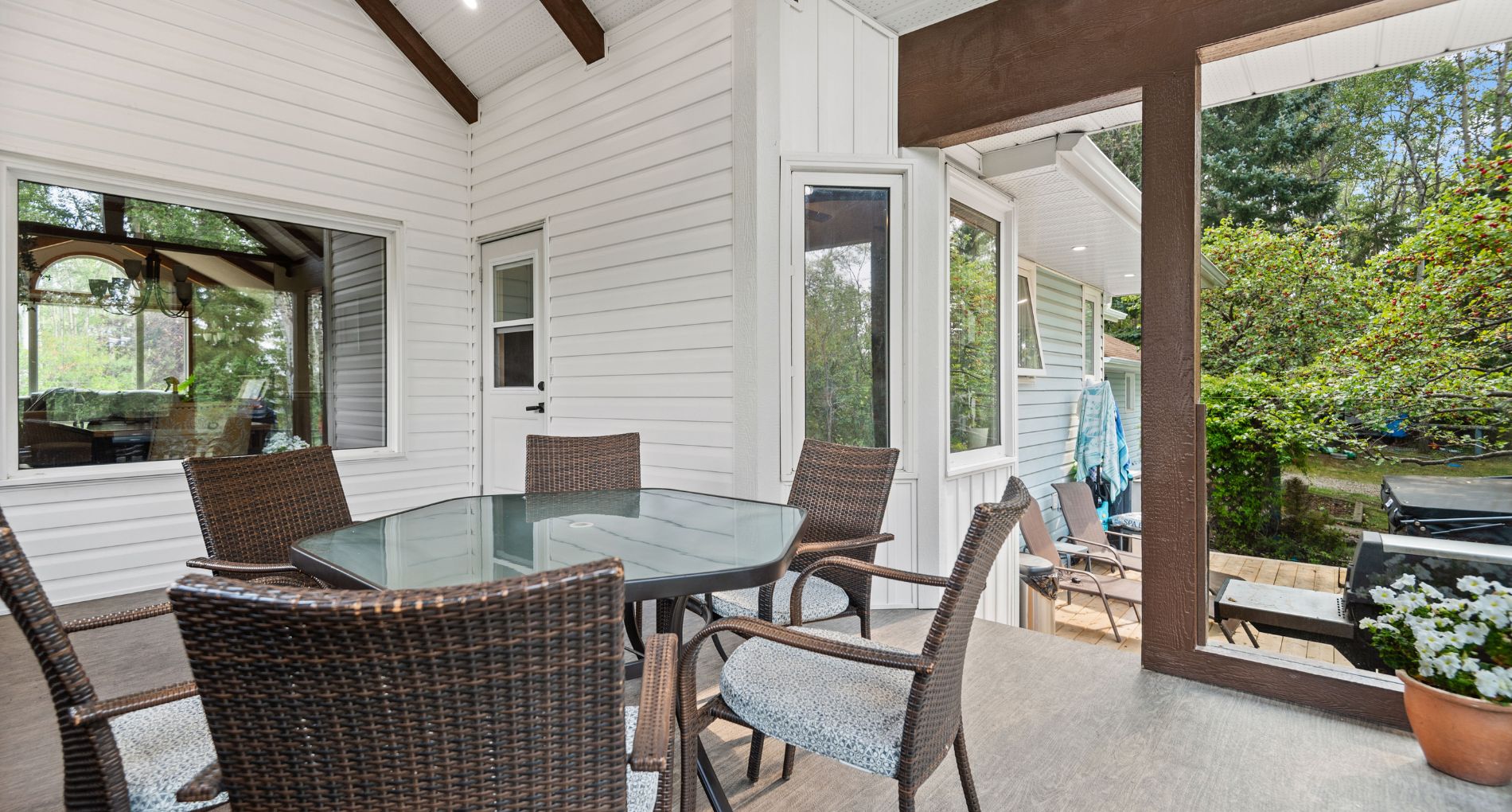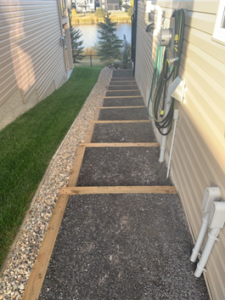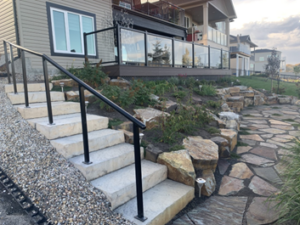Creating Inclusive Outdoor Spaces: Barrier-Free Landscaping for All
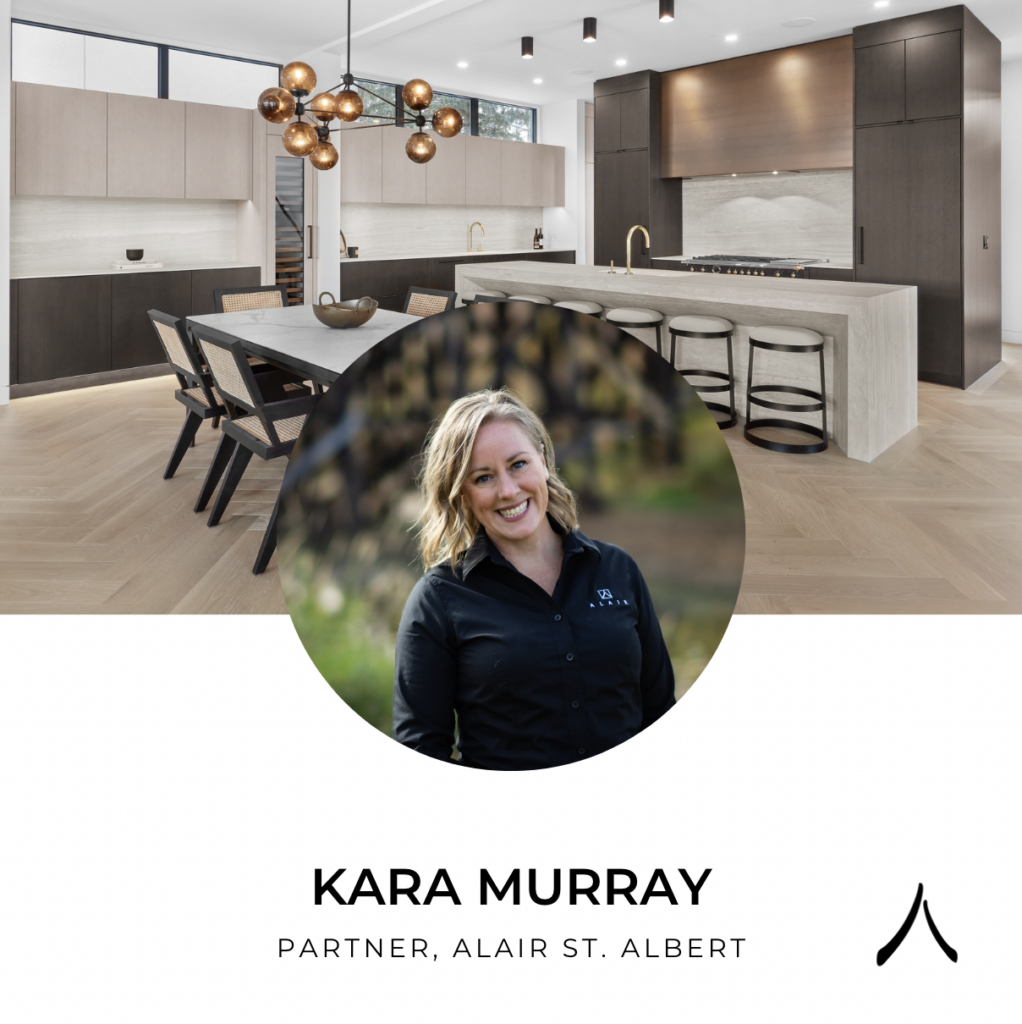
In today’s world, the concept of accessibility goes beyond simply the design of homes. As our understanding of inclusivity evolves, we recognize the crucial role that accessible landscapes play in enhancing the overall enjoyment of living spaces. While accessible homes provide the necessary accommodations for individuals with mobility challenges or disabilities within their immediate environment, it is equally important to extend this inclusivity to the outdoor spaces surrounding the home.
As a strong advocate for inclusive housing, I was excited to interview Tim with YOSO Landscaping and Design. He and his team not only do beautiful work, but they have plenty of experience and ideas when it comes to inclusive outdoor spaces.
Can you explain the concept of accessible landscaping and why it is important for creating inclusive outdoor spaces?
Accessible landscaping is a style of landscaping that allows the elderly and people with disabilities to access and use a green space or yard without limitations. It allows everyone to enjoy the outdoors even if mobility is a concern.
What are some key considerations and design principles to remember when creating barrier-free landscapes?
One thing to think about is how a person—and people—move around. Some have mechanical assistance while others may stride differently. Often, people with disabilities need more space to move around. For example, a wider pathway allows more room for a wheelchair, scooter, or walker to turn safely.
Smooth surfaces increase safety. Many elderly people don’t lift their feet in the way a younger person does. Textured pathways, brick walkways, or paver stones look fantastic; however, they can create mobility impediments—even trip and fall hazards.
Often, as we age, our stride shortens a bit- that means when designing a pathway of stepping stones, they should be set for people with shorter strides. It’s much less expensive to create the pathway for one’s later years than to re-do the path once we’re older.
How do you approach the design of pathways and walkways to ensure they are accessible for individuals with mobility devices?
Make sure that the surface is smooth and free of any edges that they could catch a toe, a walker, or a cane upon. Also, make sure that the pathway is wide enough to accommodate turning with a walker or turning in a wheelchair.
What are some innovative techniques or features you incorporate into your designs to enhance accessibility in outdoor spaces?
For one of our clients, who has mobility and balance issues, we made the landings on their steps four feet long. This large tread allows him to confidently get his footing and balance before the next step.
(Photography by YOSO Landscaping and Design. Steps with 4-foot treads against the wall allow the user lots of space for easy navigation.)
How do you address potential challenges related to terrain, slopes, or uneven surfaces when creating accessible landscapes?
If the slope is too much for a client, we will suggest retaining walls or floating decks to reduce the slope and make the space more usable. Alternatively, we can create switchbacks (zig-zag ramps) on a slope to minimize the angle. Handrails can be built into retaining walls for added safety.
Can you provide examples of specific plant selections that are ideal for accessible landscapes, considering factors like maintenance, visibility, and sensory appeal?
For plants, we suggest low-maintenance, drought-resistant, native plant material. Basically, plant and forget. Examples are Karl Forrester Feather Reed Grass and other similar decorative grasses. Lilies, Irises, and Juniper are also great for our region because they’re all low maintenance, but still have a nice look, enhance gardens with beautiful colors, and provide unique scents and textures. One need only tend to these plants once per year (an autumn cut), and they’ll do fine without daily watering, so the cost of maintenance is reduced.
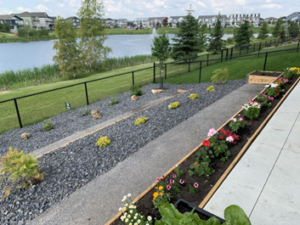
Do you have experience incorporating assistive devices or technologies, such as handrails, ramps, or accessible garden tools, into your designs?
We work with a few custom metal shops to manufacture railings, and there are several outstanding lighting systems that are quite cost-effective–they don’t require electricians. We often incorporate short, small, low-angle ramps to help with small elevation changes.
(Photography by YOSO Landscaping and Design. These garden boxes are easily accessible from the pathway which is a flat, compact surface. One can sit on the box edge or use a small chair for gardening.)
How do you approach the issue of water management in accessible landscapes, particularly when it comes to irrigation systems and rainwater runoff?
For any garden space, surface water management should be the foremost concern. Grading to ensure positive drainage is the most important detail; interestingly, a small slope of 1-2% is enough to make that happen. In an accessible garden, our goal is to guide water –when possible– away from pathways.
Rain gardens are a great addition. They replace an area in your garden for the purpose of collecting water that runs off your grass, roof, or driveway. Filled with plants, they’re a shallow depression of loose, deep soil, that collects and guides water back into the water table rather than the drain system.
Irrigation systems should be designed to provide water only where required, meaning that pathways should remain (mostly) dry. Alternatively, we may install additional swales, weeping tile, or French drains to manage water flow.
Can you discuss the role of lighting in creating safe and accessible outdoor spaces, and how you integrate lighting solutions into your designs?
We’re incredibly lucky in Edmonton that our summer days are so long. That said, a great lighting system can provide accent lighting for trees and enhance water features while increasing safety and security. A great lighting system provides visual interest during our long, dark winter months, backlighting trees and creating depth.
Adding some low-voltage lighting to a pathway helps illuminate any hazards along the way. These can include steps and elevation changes, or twists and turns in the pathway. There are some fantastic lighting systems that are easily installed at relatively low cost. Essentially, plug-and-play garden lighting is here to stay.
How do you ensure that seating areas or outdoor spaces are designed to accommodate individuals with mobility challenges?
Adding enough space for wheelchairs, scooters, and walkers around fire pits and eating areas. We can also build in points where mobility aids can be easily turned around. If needed, add hand grips and small railings for people to use for stability.
Can you share any examples of projects where you successfully integrated accessible design principles into a landscape?
One client’s property, on a lakefront, has a very steep slope. As the client has mobility challenges –particularly on slopes and stairs– we needed a design that opened the space for living and use.
To ensure safety, we created steps with 4-foot-deep treads on one side of the home. The stairs to the lower level of the property were curved so that the custom railing side had nice deep treads and a handhold. They can enjoy the entire property.
One important element was a glass-lined, low-maintenance, composite deck that added almost 400 square feet of usable space to their garden. This eliminated the steep slope and provided a flat surface extension to the beautiful, shaded patio already in place.
(Photography by YOSO Landscaping and Design. The deck added almost 400 sq ft of easy access space. A bench has been built into the wall system on the bottom level.)
How do you collaborate with other professionals, such as architects or contractors, to ensure a cohesive approach to accessibility in landscape design projects?
Communication. We always have our subcontractors meet our clients so they can see everything for themselves and then we discuss accessibility issues. Often, someone will identify an unrecognized concern which we then account for in our design.
Accessible landscapes not only provide opportunities for outdoor enjoyment and recreation but also foster a sense of connection with nature, promoting physical and mental well-being. By ensuring that both indoor and outdoor spaces are accessible, we can create environments that truly embrace the needs and rights of all individuals, allowing them to thrive and engage fully in their everyday lives.
Are you looking for a great landscaper who also considers the physical needs of their clients? Contact Tim with YOSO Landscaping and Design
Looking for a builder that considers the physical needs of their clients? Get in touch: [email protected]
